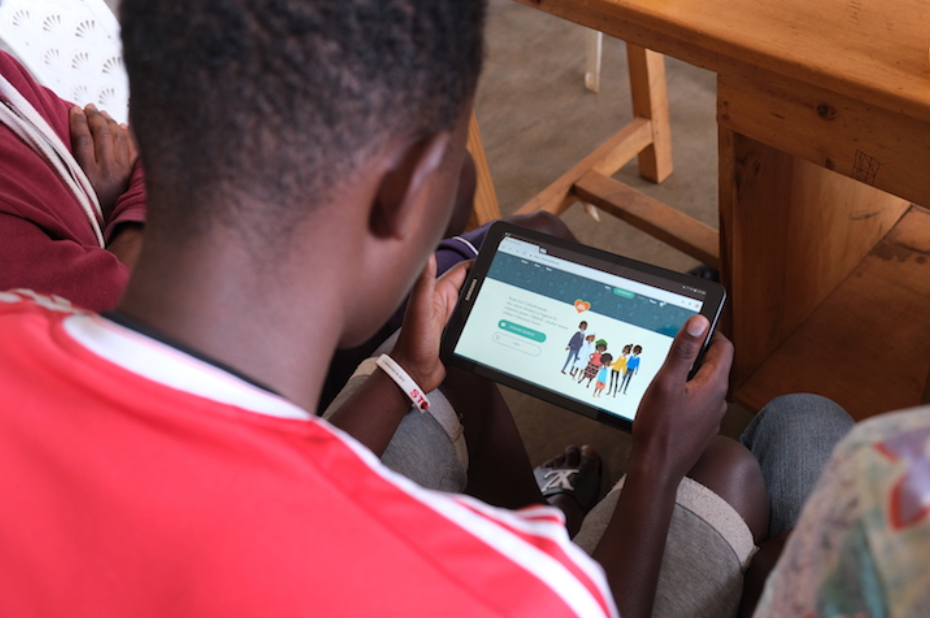CyberRwanda
Using technology and storytelling to equip and empower adolescents to prevent unplanned pregnancy and HIV in Rwanda

As low- and middle-income countries transition from paper to digital systems, family planning programs can benefit from unprecedented opportunities to improve services. Investments in digital health tools have expanded exponentially, but information on what works—and what does not— remains limited and scattered. As investments have increased, digital applications and data fragmentation have proliferated, but stakeholders are moving towards more coordinated efforts to scale digital health solutions, support countries’ digital health infrastructure, and share evidence-based learnings.
This Digital Health Compendium enables users to explore case studies across a range of digital health technologies used to enhance family planning programs mainly in sub-Saharan Africa, but also in other regions of the world. Digital health applications in family planning programs can be broadly classified as those affecting demand generation, service delivery, supply chain management, and the policy and enabling environment. In many low- and middle-income countries, digital health innovations were adopted earlier in other health sectors, including HIV/AIDS, maternal and child health, and noncommunicable disease prevention and response. As a result, much of the impact evidence is likewise restricted to those sectors. To advance greater adoption of digital technology in family planning programs, more data and information on the challenges, opportunities, scalability, and results are needed. This compendium aims to consolidate emerging information and data on applications of digital technology in family planning programs to inform adoption and scale-up of successful approaches.
All of the case studies were submitted by the implementing organizations and include a description of the digital health intervention, program context, and, if available, important findings and lessons learned through rigorous evaluations or program data. The compendium facilitates a quick search for case studies based on the target user for digital health intervention, building block for the digital health enabling environment, family planning program classification, and country location. The case studies give policy and program decisionmakers insights on real-world applications of digital health, promising practices, challenges, and other lessons that can be applied to current and future programs.
Using technology and storytelling to equip and empower adolescents to prevent unplanned pregnancy and HIV in Rwanda

Laura Baringer
Project Director
YLabs
Email
Society for Family Health–Rwanda (CyberRwanda local implementing partner, responsible for all on the ground outreach and implementation)
University of California at-Berkeley, School of Public Health (Lead evaluation partner, responsible for the Randomized Control Trial)
University of Rwanda, School of Public Health (Local evaluation partner)
USAID
Packard Foundation
RCT period: May 2020 – December 2021
National scale: January 2022 – December 2022
Rwanda
Client, Health Care Provider
Services and Applications
Demand Generation
In Rwanda, only 11 percent of adolescents have comprehensive HIV prevention knowledge. Family planning and reproductive health (FP/RH) information and programs are often designed to reach married women. Even though Rwandan law allows youth to access to FP/RH care, cultural norms, provider bias, or a lack of information about the need for FP/RH care make finding youth-friendly services difficult for unmarried young people.
These “old school” challenges persist, even in a time of “new school” solutions. Due to the high rates of internet usage among young people ages 12 to 19 in urban and peri-urban settings, CyberRwanda used youth-driven design to create a fun, interactive, and inspirational digital platform that seamlessly integrates economic empowerment with on-demand health information and products for Rwandan youth.
CyberRwanda is a digital platform that aims to improve the health and livelihoods of Rwandan adolescents (12 to 19 years). Co-designed by YLabs with Rwandan youth themselves, this digital Direct-to-Consumer platform weaves together Edutainment (educational entertainment) and knowledge-based content through a webcomic series and a robust FAQ library, with online pharmacy ordering and a health facility locator. Together, these components deliver integrated age-appropriate adolescent health and economic empowerment information, and linkage to youth-friendly services.
After a successful pilot in late 2019, CyberRwanda is ready to launch an 18 to 24 month randomized controlled trial (RCT) in late 2020. The study will take place in 20 schools across eight districts.
Using human-centered design and youth-driven design approaches, CyberRwanda has been designed with and for youth throughout every step of the design process; from the design research and ideation phases where we sought to understand the issues that were of biggest concern to young people and what solutions we could implement to address those concerns to our testing of rough and live prototypes.
The project will be implemented in two phases:
Phase 1: RCT—Impact Study
We will be conducting an RCT to assess the impact and cost-effectiveness of this comprehensive digital platform. A three-arm cluster non-inferiority RCT study will be conducted in 60 schools across eight districts. The three arms are:
Phase 2: National Scale
Upon completion of a successful impact evaluation, we will launch CyberRwanda on a national level. The second phase of the project will be national-scale implementation, using media, community events, and mass media marketing to promote the launch of the product.

From our design research, prototyping, and pilot phases, CyberRwanda has learned:
CyberRwanda improves the lives of young people by putting engaging health education content and access to FP/RH products in the palm of their hands. At every step of CyberRwanda’s design—from its very inception in 2016 to its current pilot phase—young people have remained at the heart of the design and decisionmaking process. As a youth-driven design studio, YLabs works in partnership with young people to create solutions to the problems that matter to them, and the success of this project demonstrates the viability of this approach.
